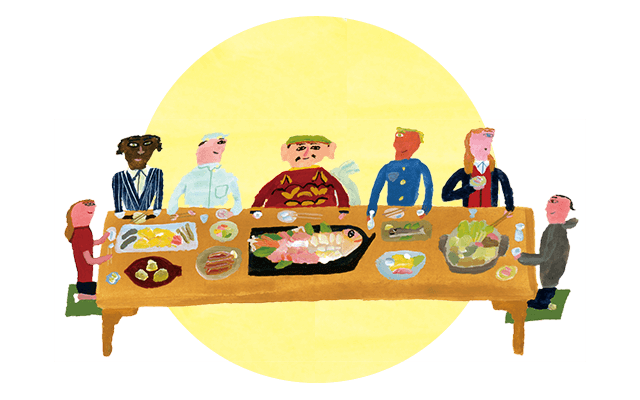
Harima Archives
2022.03.18 The Secret to Why Soy Sauce Makes Food Delicious

The Appeal of Soy Sauce: Color, Flavor, and Aroma
Soy sauce in Japan has a history and tradition of about 400 years. Its original form was a condiment called hishio from the Nara Period. A close version of the modern soy sauce today was developed during the Kamakura Period. Production of the condiment was regularized during the early Edo Period. During this time, Harima (present-day southwest Hyogo Prefecture) became one of the critical regions for brewing soy sauce.
The appeal of soy sauce is its bold color, flavor, and aroma. The movement of microbes changes the original ingredients and reacts together to create soy sauce. Let’s take a closer look at these three points to discover more about the world of soy sauce.
Flavor that You Can See and Smell
You can feel the flavors of soy sauce simply by looking at it and smelling its aroma. The colors of soy sauce change depending on its type. Regular soy sauce has a transparent, bright crimson hue to it. A reaction causes this during the fermentation process with a substance known as melanoidin. There have been 300 different types of components discovered for its aroma. These components are of many different things: apples, roses, vanilla, and others. The scent of soy sauce has the power to deodorize the strong raw smells of fish and meat, similar to spices. At the same time, it also releases a fragrant aroma once the heat has been added.
The Five Basic Tastes that Give Rise to Deep Flavors
The five basic tastes of sweet, sour, salty, bitter, and umami make the flavors of soy sauce deep. These five basic tastes allow food to become even more flavorful and delicious. Sweetness has a soft, mellow, and round flavor—wheat starch changes during brewing to produce glucose. Sourness is to tighten the flavors of food. This taste is created when glucose changes due to the movements of lactic-acid bacilli. The salt content of regular soy sauce is 16% to 17%. The soy sauce does not taste too salty because other ingredients mellow the saltiness out. Bitterness is like a subtle seasoning that gives food richness to it. The umami flavor comprises 20 different types of amino acids; this flavor is created when proteins of soybeans and wheat are decomposed by koji mold. Substances such as lysine or threonine, found inside this flavor, cannot be ingested from staple foods such as rice or wheat, making it a critical taste.
There Are Many Delicious Flavors as a Result
Soy sauce has been said to prevent and destroy E. coli. Reserved vegetables such as vegetables pickled in soy sauce or preserved food boiled in soy sauce using this particular characteristic of the condiment. When eating sashimi, people dip their sashimi in soy sauce not only because it is delicious but also because it deodorizes the raw fish smell of the food. In addition, adding a little bit of the condiment can bring out the natural sweetness of foods like boiled foods. Adding a few drops of it can also mellow out the spiciness of the food. Like soba tsuyu or ten tsuyu (sauces for dipping soba and tempura respectively), the condiment’s glutamic acid and katsuobushi inosinic acid work together to create a deep umami flavor, creating a synergy of flavors. By combining them, there are plenty of rich and delicious flavors to be found.
How to Use Soy Sauce to Create Delicious Flavors
To prolong the rich flavor of soy sauce, it is best to keep the bottle refrigerated after opening. The color and taste tend to degrade quickly when exposed to air, sunlight, or heat.
To use the aroma of soy sauce well, add it in as one of the last ingredients to go into the dish. For dishes that use soy sauce to boil, adding a few dashes at the end can bring about a pleasant aroma that one can taste. In addition, adding soy sauce to fermented foods such as miso, mirin, and refined sake can create unique flavors. Soy sauce also matches well with western food ingredients such as cheese, both fermented foods.



